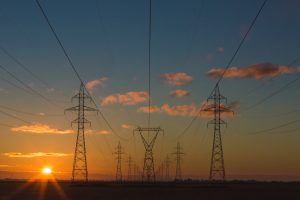 Coal-heavy utilities in the Midwest have mustered a new argument to secure subsidies for their uneconomic power plants. They used to suggest the plants were needed to maintain reliability, until regional grid operators declared there was plenty of generation to ensure the lights stayed on. They then attempted to argue the plants provided jobs and taxes to the local communities, until conservative economists highlighted the inefficiency of subsidies.
Coal-heavy utilities in the Midwest have mustered a new argument to secure subsidies for their uneconomic power plants. They used to suggest the plants were needed to maintain reliability, until regional grid operators declared there was plenty of generation to ensure the lights stayed on. They then attempted to argue the plants provided jobs and taxes to the local communities, until conservative economists highlighted the inefficiency of subsidies.
Now several utility executives, including the chief executive officer of American Electric Power (AEP), are trying to regale regulators with the importance of baseload generation. The argument goes something like this: Since some power plants – largely nuclear reactors and coal-fired power plants – have a hard time ramping up and down in response to changing electricity demand, the grid needs those units to operate all the time, to provide a “base” output of power.
Such last-century thinking, however, ignores the phenomenal advances provided by modern sensors, smart meters, and telecommunications. A combination of dynamic power options – like demand response (crediting homes and business for using less electricity when the power grid is stressed), renewable energy, and battery storage, among others – allow the grid to respond more nimbly than ever before. Rather than propping up old, lumbering baseload generators, we should prioritize a more modern, cleaner grid that focuses on flexibility and diversity.
Linking the Polar Vortex and FirstEnergy’s subsidies
After 2014’s Polar Vortex caused reliability issues, utility executives effectively leveraged the opportunity to get a better deal for their baseload units. They convinced PJM and other grid operators to provide higher capacity payments to power plants that operate year-round, including during peak-demand periods in both the summer and winter.
As a result, some utilities operating baseload coal and nuclear units made hundreds of millions of additional dollars – simply for continuing what they had already been doing. For many utilities, however, even that windfall was not enough to enable old and inefficient plants to compete with other generators, particularly natural-gas-fired units. Power company executives, in response, turned to states for subsidies.
The most prominent appeal came from Ohio-based FirstEnergy, which initially requested $4 billion to keep several baseload units operating. When the Federal Energy Regulatory Commission (FERC) ruled that such subsidies illegally distorted competitive markets, the utility upped its request to $12 billion and tried to avoid federal oversight by claiming the bailout was not related to any particular power plants. The Public Utilities Commission of Ohio (PUCO) recently offered the utility $600 million, with seemingly no strings attached.
The odd thing about that ruling, which the PUCO chairman himself admitted was “undoubtedly unconventional,” is the regulators went on and on about the importance of modernizing the grid – the very actions that would bring our energy system into the 21st century and reduce the need for baseload capacity. Then they simply provided FirstEnergy with an enormous subsidy that will enable it to keep operating outdated and dirty power plants, without any requirement to modernize the grid.
The baseload argument spreads
AEP’s chairman, Nick Akins, hopes his utility soon gets a similar deal to what the PUCO gave FirstEnergy. “You see states reaching out trying to do something to provide support for these types of assets,” he said. Those “types of assets” are not the sophisticated resources that will lead to a cleaner, more efficient electric grid.
Atkins and his utility colleagues may be trying to reframe the subsidy debates, yet other utility decision-makers recognize the opportunity at hand:
I think what we see in the future is the whole concept of a baseload power plant going away. Power plants have to be much more dynamic in terms of how they operate in the marketplace, much more flexible, much more integrated renewables and other demand response technologies,” said Cris Eugster, Chief Strategy Officer for San Antonio’s CPS Energy.
Between the falling cost of clean energy resources and new technology constantly being unveiled, there are more power options than ever before. No doubt it will take time to transition. But regulators and executives should be focused on how best to modernize the grid in ways that encourage diversity and flexibility, while minimizing the need for outdated baseload generators.
Enviroshop is maintained by dedicated NetSys Interactive Inc. owners & employees who generously contribute their time to maintenance & editing, web design, custom programming, & website hosting for Enviroshop.
